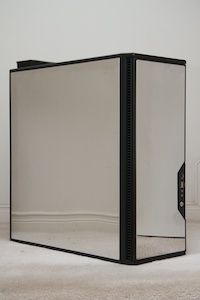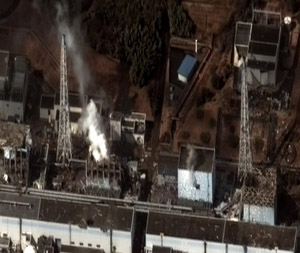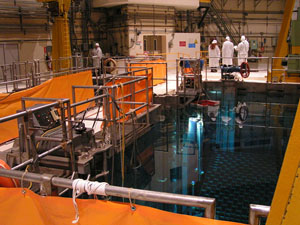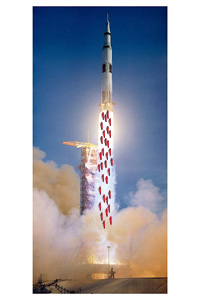It is somewhat ironic that the second worst nuclear disaster might have turned out differently had the worst disaster not been associated with a test at Chernobyl that might have prevented the escalation of the problems at Fukushima Dai-ichi.
The disaster at Fukushima was due to a failure of the cooling systems. The root cause was the loss of power to drive the pumps. When the earthquake hit, the reactors were SCRAMed immediately. This terminated the on-going critical reaction. All that was left to do was to cool the reactor from the residual or decay heat is dissipated (typically a few months).
Normally at that point the plant would have been switched over to the electrical grid becoming a consumer of power instead of a producer. However, the earthquake damaged the grid in that area. And even had the grid escaped unscathed, many other power plants had shut down after the earthquake, and it is not likely that there was enough power available.

The next level of safety equipment were the back-up diesel generators. The generators kicked in almost immediately at Fukushima. However, due to design flaws, the generators were not protected against the tsunami. The seawall was only 5.7 metres tall, which was easily topped by the 15 metre tsunami. The generators were located in the non-water-tight turbine room instead of inside the watertight reactor building. The Fukushima II plant had the reverse layout and it better survived the tsunami.
The final line of safety was to go to batteries to power the cooling equipment. The batteries ran out after about 8 hours.
This is when the cooling stopped and the nuclear crisis really began.
The disaster at Chernobyl was caused by a bad reactor design and a badly created test plan.
It was well known that the loss of power can cause problems for reactor cooling after the plant is no longer generating power. The Chernobyl Reactor 4 was being shutdown for normal maintenance that night, nearly 25 years ago. A test was planned to see if there was enough steam left after a shutdown and from the residual heat, to power the turbines and generators to provide power for the cooling systems during the time from emergency shutdown until the diesel generators are up to full power. This can take a minute or two.
The test was to be run during the day shift; they had been trained on the procedure. However, an unexpected shutdown at another plant meant that the power from Reactor 4 was still required for the city of Kiev, so the test was postponed until later in the evening. This meant that the test would happen with the next shift, who were not trained on the procedure.
Around 1AM, the power levels were reduced at the plant to prepare for the test. However, due to the design of the old reactor, power levels fell too far to start the test, so the control rods preventing the reaction were withdrawn. Poisoning of the reaction by accumulated xenon-135 meant that the decision was made to remove more control rods to increase the reaction back to the level required for the test.
This, and changes to the flow rates of the cooling pumps, caused more water in the core to turn to steam. This had the detrimental effect of increasing the reaction (positive void coefficient of reactivity). This is because water is denser and can absorb neutrons, but steam is much less dense (and less mass per volume) and thus the neutrons are free to continue the nuclear reaction. More reactions means more heat. This caused more steam, which meant more reactivity. The reactor was nearly out of control at this point.
The final step occurred at 1:23AM. For reasons not fully explained, the reactor was manually SCRAMed. It might have been an accident, or it might have been to attempt to control the reactor; many alarms had been sounding in the control room during the test.
This is where the final, fatal design flaw sealed the fate of Reactor 4. The first 4.5 meters of the control rods used in the RBMK reactor were not made of neutron absorbing materials such as boron, but rather graphite which does not absorb neutrons. As the rods were lowered, the graphite tip displaced even more water, which greatly increased the reaction. The power levels quickly rose to over 30 gigawatts, over 10 times the normal operating maximum. This massive spike in power flashed the remaining water into steam in a runaway reaction.

This caused the steam explosion that destroyed the reactor and the building. It blew the 2,000-ton upper plate off the reactor and utterly destroyed the reactor building.
And here is the irony. Had the test been successful (combined with correcting the design flaws at Fukushima I), it might have provided a method to temporarily power the cooling systems at Fukushima. It seems inconceivable, but it is possible that the best solution at Fukushima might have been to let the reactor continue to operate, in order to power its own pumps.
This of course would not have been the safest course of action, based on the lack of hard data at the reactor in the hours after the earthquake. While continuing the reaction to power the cooling at Fukushima would seem like a good thing, it also meant that a large aftershock could further damage an active nuclear plant. Shutting down and stopping electrical generation was the safer option, based on the vast number of unknowns in the hours after the earthquake.











